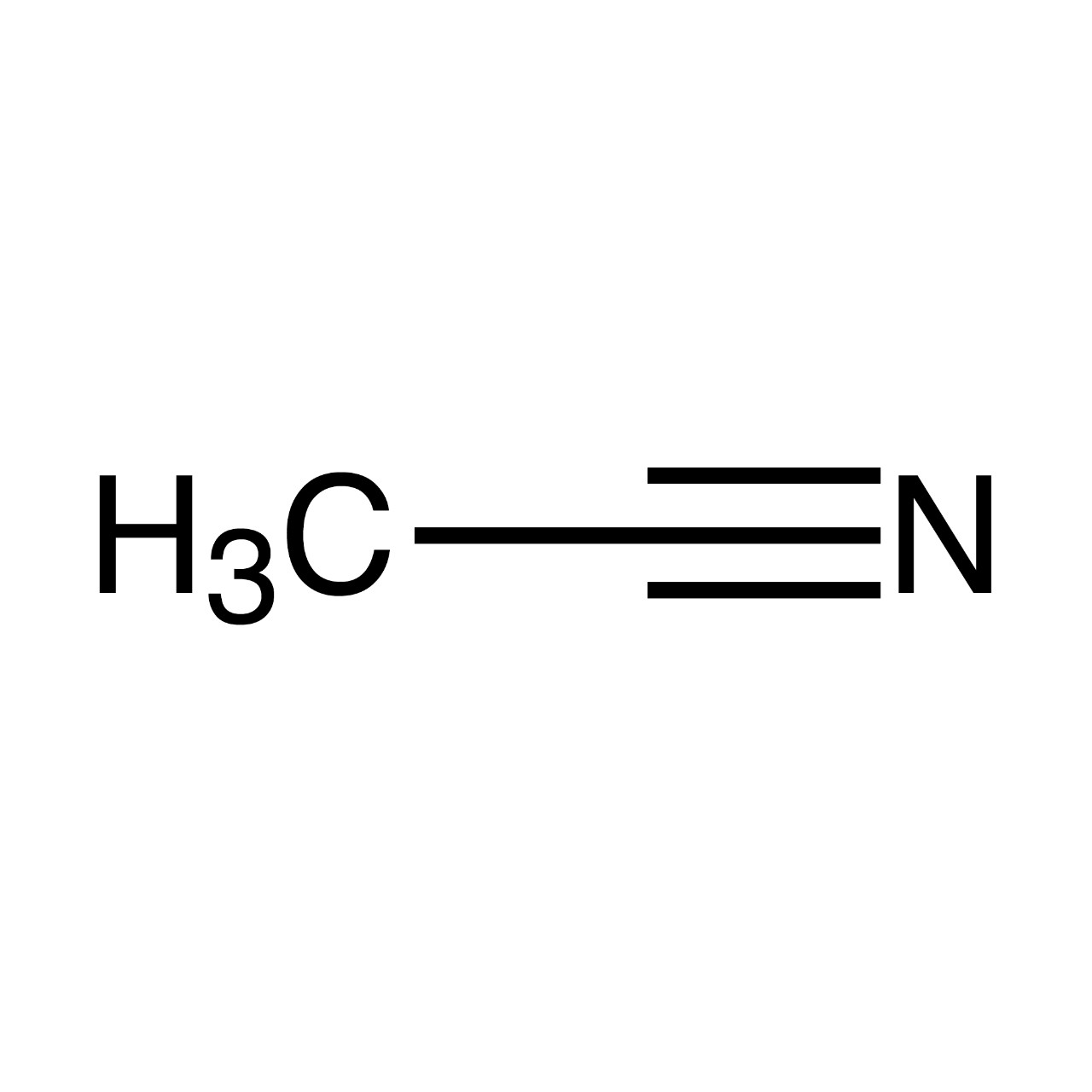Acetonitrile (CH3CN)
[missing "en.searchResults.oneMoment" translation] ![]()

Acetonitrile (CH3CN), CAS 75-05-8, also known as methyl cyanide or cyanomethane, is the simplest organic nitrile. Produced mainly as a byproduct of manufacturing acrylonitrile, acetonitrile is a colorless liquid with an ether-like odor.
Available in various grades, acetonitrile is commonly used in the laboratory:
- As a polar aprotic solvent for a variety of organic reactions
- For such applications as high-performance liquid chromatography (HPLC)
- For reverse-phase HPLC as an alternative to methanol
In industry, it is likewise used as a solvent for the manufacture of such products as pharmaceuticals, pesticides, and perfumes.
When heated, acetonitrile emanates highly toxic hydrogen cyanide fumes and produces flammable vapors in reaction with water, steam, or acids. Exposure to acetonitrile in liquid or vapor form may irritate the eyes, nose, and respiratory tract. Long-term exposure may cause central nervous system damage. Handlers should wear protective gloves, proper eye and face protection, and avoid breathing fumes. Acetonitrile should be kept away from open flames, hot surfaces, and sources of ignition and stored in a well-ventilated, cool, tightly closed container.